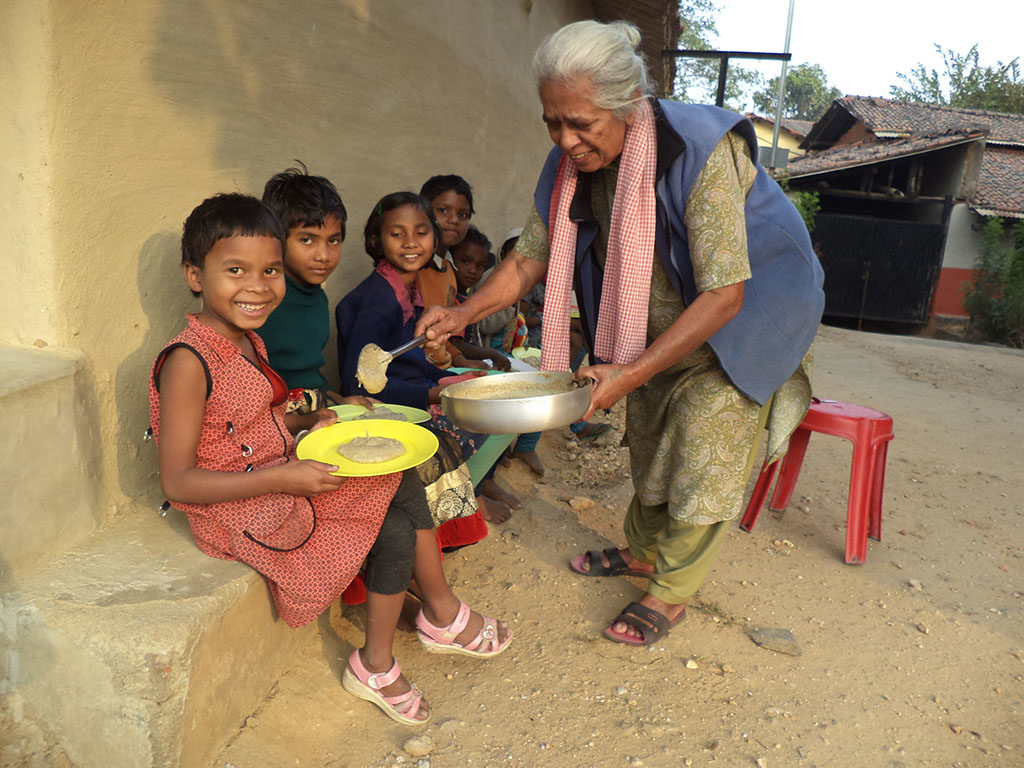In 1981 Medical Mission Sisters were invited by Deen Sewa Dal (DSD), a parish organization, to respond to the health needs of the santals, in six blocks of Hazaribagh Unit. The first two pioneers set up their santal style mud residence in Charie in the midst of the people and began the process of forging bonds with them, while using their medical skills to care for their health. Soon enough we discovered through interactive meetings with the people that health was not their priority. Land was a burning issue and one of the early achievements was to get all the land in their possession measured, registered and getting legal land papers. Through health work we came in contact with over 72 villages and the forces that were eroding and pauperizing the santal community. It was imperative to bring the santals together on a common platform. By 1986, it became necessary for us to opt out of DSD and move to Kasiadih. The people contributed tiles and their labour in making a mud house for us. Health continued as an important aspect of involvement, under the name of Santal Swasthya Seva Samaj. With the help of Manjhi Harams (head men) several meetings were held and Chotanagpur Advasi Sewa Samati (CASS) was formed and registered in 1993. The goals of CASS are: Economic Development; Educational improvement; Health status improvement; Community based organization; Tribal welfare; Women’s empowerment; Management functioning; Infrastructure facilities.
Cooperative work, like digging wells, planting trees, releasing land from moneylenders, building schools in five villages and other village welfare activities, was encouraged by skill development of the santals through socio-political analysis and achievement motivation.
A health center developed first in Kasiadih and later in Horomocho and Lopungtandi. The last two were at the request of and in close collaboration with the people. These two are run by the community through a Village Health Committees who are given the required training. CASS only provides the two nurses. Self Help Groups (SHGs) and non-formal Education centers for children evolved side by side with the clinics. The health staff takes care of the local SHGs. They succeeded in handling local issues and challenges posed by local middle men and land mafia in neighbouring villages.
Besides the above, one MMS helped with facilitating the process of returning ownership of forest lands to the communities, which has borne fruit with a recent legislation. She is an active member of Jarkhand Jangal Bachao Andolan (save forests). She conducts training programs for Government officials. She is also called upon to train and share her experiences at Unit, State, National and International (Rome, Thailand and Finland) levels. She has also done forest mapping with its resources. Another MMS is an active member of Bharat Jan Andolan, who with other organizations put pressure on Government to implement the Forest Right Act i.e., Community Forest rights and Individual rights on Minor Forest produce..
In 1993 an MMS was requested to take up the problem of displacement of people by coal mining in Parej, funded by World Bank. Assistance came with four persons from the area recruited to work on the issue through CASS. A citizen’ forum was also formed to support the work. CASS asked the World Bank (WB) to come and see the ground reality. A public meeting was organized with WB representatives, members of CASS, the citizen’s forum, members of Central Coal Limited and persons affected by the project. In 1996 another MMS joined the Kasiadih mission and immediately became part of the Parej struggle.
In spite of this and several meetings with the people, the company filed an eviction notice on the people, which was finally compromised in 1998. In 2001 the WB funding was terminated. All the gains were possible due to pressure from people, CASS and an alliance of 62 organizations affected by mining. The lessons learnt from Parej Project were shared successfully with farmers in the Karanpura Valley where twenty two mining projects were to displace eight lakh farmers from the Rice Bowl of Jharkhand. This has forced Government to come up with a rehabilitation package.
Collaboration has been a vital part of this enterprise. Successful outcome of some of the peoples’ struggles has been the effective networking at regional, national and international levels. In spite of this, the daily mission in Jharkhand continues to be demanding because of rapid industrialization by the State and the growing opposition of the people. Much remains to be done in the empowerment of local people to claim and assume responsibility, to gradually achieve sustainability, to oppose the present globalization, which only eats up the resources of the people and degrades the earth, to work towards ‘Health in Peoples Hands’. Some steps towards this are: formal and non formal education for children and youth; skill training for men and Grihini (Home Science) training for young women; running Children’s Parliament to help build awareness and political acumen; improving livelihood through land use and a new system of rice intensification; conducting training programs on health. All this requires sustained effort by the people with adequate support from MMS.
